#laravel 6 crud tutorial
Explore tagged Tumblr posts
Text
Complete PHP Tutorial: Learn PHP from Scratch in 7 Days
Are you looking to learn backend web development and build dynamic websites with real functionality? You’re in the right place. Welcome to the Complete PHP Tutorial: Learn PHP from Scratch in 7 Days — a practical, beginner-friendly guide designed to help you master the fundamentals of PHP in just one week.
PHP, or Hypertext Preprocessor, is one of the most widely used server-side scripting languages on the web. It powers everything from small blogs to large-scale websites like Facebook and WordPress. Learning PHP opens up the door to back-end development, content management systems, and full-stack programming. Whether you're a complete beginner or have some experience with HTML/CSS, this tutorial is structured to help you learn PHP step by step with real-world examples.
Why Learn PHP?
Before diving into the tutorial, let’s understand why PHP is still relevant and worth learning in 2025:
Beginner-friendly: Easy syntax and wide support.
Open-source: Free to use with strong community support.
Cross-platform: Runs on Windows, macOS, Linux, and integrates with most servers.
Database integration: Works seamlessly with MySQL and other databases.
In-demand: Still heavily used in CMS platforms like WordPress, Joomla, and Drupal.
If you want to build contact forms, login systems, e-commerce platforms, or data-driven applications, PHP is a great place to start.
Day-by-Day Breakdown: Learn PHP from Scratch in 7 Days
Day 1: Introduction to PHP & Setup
Start by setting up your environment:
Install XAMPP or MAMP to create a local server.
Create your first .php file.
Learn how to embed PHP inside HTML.
Example:
<?php echo "Hello, PHP!"; ?>
What you’ll learn:
How PHP works on the server
Running PHP in your browser
Basic syntax and echo statement
Day 2: Variables, Data Types & Constants
Dive into PHP variables and data types:
$name = "John"; $age = 25; $is_student = true;
Key concepts:
Variable declaration and naming
Data types: String, Integer, Float, Boolean, Array
Constants and predefined variables ($_SERVER, $_GET, $_POST)
Day 3: Operators, Conditions & Control Flow
Learn how to make decisions in PHP:
if ($age > 18) { echo "You are an adult."; } else { echo "You are underage."; }
Topics covered:
Arithmetic, comparison, and logical operators
If-else, switch-case
Nesting conditions and best practices
Day 4: Loops and Arrays
Understand loops to perform repetitive tasks:
$fruits = ["Apple", "Banana", "Cherry"]; foreach ($fruits as $fruit) { echo $fruit. "<br>"; }
Learn about:
for, while, do...while, and foreach loops
Arrays: indexed, associative, and multidimensional
Array functions (count(), array_push(), etc.)
Day 5: Functions & Form Handling
Start writing reusable code and learn how to process user input from forms:
function greet($name) { return "Hello, $name!"; }
Skills you gain:
Defining and calling functions
Passing parameters and returning values
Handling HTML form data with $_POST and $_GET
Form validation and basic security tips
Day 6: Working with Files & Sessions
Build applications that remember users and work with files:
session_start(); $_SESSION["username"] = "admin";
Topics included:
File handling (fopen, fwrite, fread, etc.)
Reading and writing text files
Sessions and cookies
Login system basics using session variables
Day 7: PHP & MySQL – Database Connectivity
On the final day, you’ll connect PHP to a database and build a mini CRUD app:
$conn = new mysqli("localhost", "root", "", "mydatabase");
Learn how to:
Connect PHP to a MySQL database
Create and execute SQL queries
Insert, read, update, and delete (CRUD operations)
Display database data in HTML tables
Bonus Tips for Mastering PHP
Practice by building mini-projects (login form, guest book, blog)
Read official documentation at php.net
Use tools like phpMyAdmin to manage databases visually
Try MVC frameworks like Laravel or CodeIgniter once you're confident with core PHP
What You’ll Be Able to Build After This PHP Tutorial
After following this 7-day PHP tutorial, you’ll be able to:
Create dynamic web pages
Handle form submissions
Work with databases
Manage sessions and users
Understand the logic behind content management systems (CMS)
This gives you the foundation to become a full-stack developer, or even specialize in backend development using PHP and MySQL.
Final Thoughts
Learning PHP doesn’t have to be difficult or time-consuming. With the Complete PHP Tutorial: Learn PHP from Scratch in 7 Days, you’re taking a focused, structured path toward web development success. You’ll learn all the core concepts through clear explanations and hands-on examples that prepare you for real-world projects.
Whether you’re a student, freelancer, or aspiring developer, PHP remains a powerful and valuable skill to add to your web development toolkit.
So open up your code editor, start typing your first <?php ... ?> block, and begin your journey to building dynamic, powerful web applications — one day at a time.

0 notes
Text
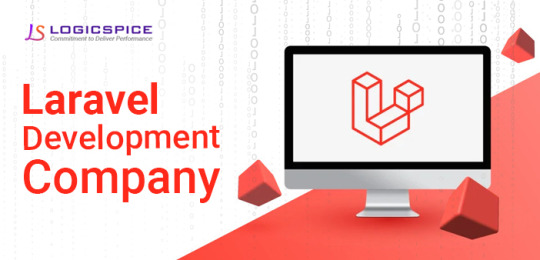
Unleashing the Power of Laravel: A Comprehensive Guide for Web Development Companies
In the ever-evolving landscape of web development, Laravel has emerged as a game-changing PHP framework, empowering developers and companies alike to create robust, scalable, and feature-rich web applications with unparalleled efficiency. This comprehensive guide delves into the key aspects of Laravel that make it a standout choice for web development companies seeking to streamline their processes and deliver exceptional results.
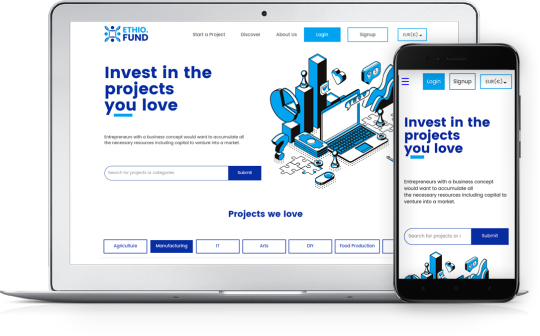
1. The Elegance of Laravel's Syntax: Laravel's syntax is renowned for its elegance and expressiveness, setting it apart from traditional PHP programming. With its clean and readable code structure, developers can write maintainable and collaborative codebases, reducing the time and effort required for onboarding new team members or revisiting legacy code.
2. Eloquent ORM: Simplifying Database Interactions: Laravel's Eloquent ORM (Object-Relational Mapping) is a powerful tool that simplifies database interactions, allowing developers to work with complex data structures effortlessly. With its advanced features like relationships, mutators, and accessors, Eloquent streamlines database operations, saving precious development time and resources.
3. Robust Security: A Top Priority: Web application security is a critical concern for any development company, and Laravel excels in this area. Its built-in features for handling user authentication, password resets, and role-based access control ensure that applications are secure from the ground up. Additionally, Laravel's robust security features can be easily customized and extended to meet specific project requirements, providing peace of mind for both developers and clients.
4. Intuitive Routing and URL Structure: Laravel's intuitive routing system allows developers to define clean and user-friendly URLs for their applications. From handling CRUD operations with resource routing to creating custom routes and middleware, Laravel's routing capabilities are both powerful and flexible, enabling Laravel web development services companies to deliver seamless user experiences.
5. Ecosystem of Packages and Tools: One of Laravel's greatest strengths lies in its vast ecosystem of packages and tools contributed by its vibrant community. Whether a project requires social media integration, subscription billing, or advanced features like real-time notifications, Laravel's package ecosystem offers a wealth of solutions, accelerating development timelines and reducing the need for reinventing the wheel.
6. Emphasis on Testing and Quality Assurance: Laravel's strong emphasis on testing is a game-changer for web development companies seeking to deliver high-quality, reliable applications. With built-in support for unit testing, feature testing, and browser testing with Laravel Dusk, developers can write robust and maintainable code with confidence, ensuring a seamless user experience and facilitating future upgrades and refactoring.
7. Vibrant and Supportive Community: Laravel's community is one of its greatest assets, providing a vast network of developers, extensive documentation, tutorials, and forums. This supportive ecosystem ensures that web development companies have access to valuable resources and best practices, enabling them to tackle any challenge and stay at the forefront of web development innovation.
8. Scalability and Performance: As web applications grow in complexity and user base, scalability and performance become critical considerations. Laravel's architecture and features, such as caching, queuing, and load balancing, empower web development companies to build applications that can handle high traffic and scale seamlessly, ensuring a smooth user experience even under heavy loads.
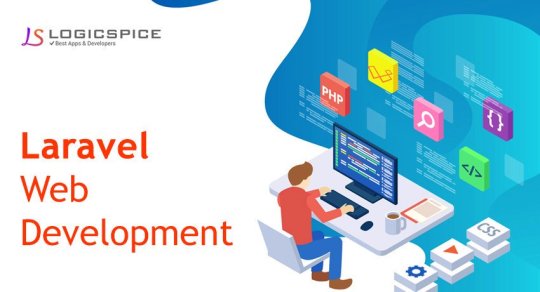
By leveraging the power of Laravel, laravel development companies can streamline their processes, enhance collaboration, ensure robust security, deliver exceptional user experiences, and stay ahead of the curve in the ever-changing web development landscape. With its elegant syntax, powerful ORM, robust security features, intuitive routing, extensive package ecosystem, emphasis on testing, vibrant community, and scalability, Laravel is the ultimate framework for companies seeking to unlock their full potential in web development. If you're seeking a reliable and skilled partner to bring your Laravel-powered web applications to life, look no further than LogicSpice. As a leading Laravel development company, they have a proven track record of delivering exceptional results, leveraging the full potential of this powerful framework to craft scalable, secure, and high-performing solutions tailored to your business needs.
#laravel web development company#laravel development company#laravel development services#laravel app development company#laravel app development services#laravel agency#laravel company
0 notes
Text
Mastering PHP: The Ultimate Guide to PHP Online Courses
In today's fast-evolving digital era, web development continues to play a vital role in shaping online experiences. One of the most trusted and widely-used server-side scripting languages in this domain is PHP (Hypertext Preprocessor). Whether you are a beginner aiming to break into web development or a seasoned programmer looking to expand your skills, enrolling in a PHP online course is a smart and strategic move.
What is PHP?
PHP is a powerful scripting language specifically designed for web development. It is open-source, easy to learn, and integrates seamlessly with HTML, databases like MySQL, and content management systems such as WordPress. PHP runs on almost all operating systems including Linux, Windows, and macOS, making it incredibly versatile.
Since its creation in 1994 by Rasmus Lerdorf, PHP has evolved dramatically. Today, it powers over 75% of websites on the internet, including big names like Facebook, Wikipedia, and WordPress. Its simplicity and wide applicability make it a must-know language for aspiring web developers.
Why Learn PHP Online?
1. Flexibility and Convenience
One of the biggest advantages of choosing an online PHP course is the flexibility it offers. Whether you're a college student, a working professional, or a freelance developer, you can learn PHP at your own pace, anytime and anywhere.
2. Cost-Effective Learning
Online courses are typically more affordable than in-person classes. Many platforms even offer free PHP tutorials or low-cost courses that deliver high-quality content.
3. Access to Quality Resources
Most online PHP courses provide a wealth of resources, including video lectures, downloadable content, quizzes, code editors, and forums. These materials make it easier to grasp complex concepts and practice coding in real-time.
4. Certification and Career Growth
Many PHP online courses offer certificates upon completion. These certificates can enhance your resume and make you stand out in the job market. With PHP skills, you can pursue roles such as Web Developer, Full-Stack Developer, Backend Developer, or Software Engineer.
Key Topics Covered in a PHP Online Course
A comprehensive PHP course typically includes the following modules:
1. Introduction to PHP
What is PHP?
Installation and setup (XAMPP, WAMP)
Syntax and basic structure
Embedding PHP in HTML
2. PHP Variables and Data Types
Strings, integers, floats, booleans
Arrays (indexed and associative)
Constants
Type casting
3. Control Structures
Conditional statements (if, else, switch)
Looping structures (for, while, do-while, foreach)
4. Functions and Scope
Creating and calling functions
Function parameters and return values
Variable scope (local, global, static)
5. Forms and User Input
Handling GET and POST methods
Form validation
Superglobals like $_GET, $_POST, $_REQUEST, $_SERVER
6. Working with Databases
Connecting PHP with MySQL
CRUD operations (Create, Read, Update, Delete)
Using PDO and MySQLi
Prepared statements for security
7. Error Handling
Types of errors (syntax, runtime, logical)
Try-catch blocks
Custom error handlers
8. Sessions and Cookies
Creating and managing sessions
Setting and reading cookies
Session security best practices
9. File Handling in PHP
Reading and writing files
Uploading files via forms
File permissions
10. Object-Oriented Programming in PHP
Classes and objects
Constructors and destructors
Inheritance, encapsulation, polymorphism
Interfaces and traits
11. PHP and Web Security
Input validation and sanitization
Preventing SQL injection and XSS
HTTPS and secure sessions
12. Advanced PHP Topics
PHP with AJAX
REST APIs in PHP
MVC Frameworks like Laravel and CodeIgniter
Composer and dependency management
Popular Platforms Offering PHP Online Courses
Here are some of the best platforms where you can learn PHP online:
1. Udemy
Udemy offers a wide range of PHP courses for all levels. Courses like “PHP for Beginners” and “Object-Oriented PHP & MVC” are among the top-rated, featuring lifetime access and a certificate upon completion.
2. Coursera
Partnering with universities and colleges, Coursera offers structured PHP programs. You can audit most courses for free or pay to receive a certification. A good example is the Web Applications for Everybody course from the University of Michigan.
3. edX
edX features PHP-related content through universities like Harvard and MIT. Though primarily focused on computer science and web development, several PHP courses are included under broader programming paths.
4. LinkedIn Learning
LinkedIn Learning provides bite-sized PHP lessons with project-based learning. A subscription gives access to multiple courses, helpful if you're pursuing more than just PHP.
5. FreeCodeCamp and W3Schools
Both platforms are excellent for beginners who want to explore PHP basics for free. W3Schools, in particular, is well-known for its hands-on “Try It Yourself” editor.
Who Should Take a PHP Online Course?
1. Beginners in Web Development
If you're new to coding and want to start with a language that's widely used and beginner-friendly, PHP is a great option.
2. Students and Computer Science Graduates
Learning PHP alongside HTML, CSS, and JavaScript can give you a competitive edge when applying for internships or junior developer roles.
3. Freelancers and Entrepreneurs
If you're planning to build your own website or work on client projects, PHP enables you to create dynamic, database-driven websites quickly.
4. Working Professionals
Developers who want to expand their backend skills or transition into full-stack development will benefit significantly from PHP expertise.
Career Opportunities After Learning PHP
Once you complete a PHP online course, several doors open for your professional growth:
Web Developer: Design and build dynamic websites.
Backend Developer: Manage server-side logic and database interactions.
Full-Stack Developer: Handle both frontend and backend tasks.
WordPress Developer: Customize and develop plugins/themes using PHP.
Freelance Developer: Build and manage websites for clients.
According to recent job market statistics, PHP developers earn an average salary of $60,000–$90,000 annually, depending on experience, location, and industry.
Tips for Success in an Online PHP Course
Set Clear Goals: Decide whether you’re learning for a job, freelance projects, or personal growth.
Practice Regularly: The best way to learn coding is by doing it. Practice through exercises and mini-projects.
Join Online Communities: Platforms like Stack Overflow, Reddit, and GitHub can help you learn collaboratively.
Work on Real Projects: Apply what you learn by building real-world applications—this boosts your confidence and portfolio.
Keep Up With Updates: PHP continues to evolve (e.g., PHP 8.x versions), so staying updated ensures your skills remain relevant.
Conclusion
PHP remains a cornerstone of modern web development, and mastering it through an online course is an effective, convenient, and affordable way to jumpstart or advance your programming journey. With comprehensive learning resources, expert instructors, and real-world projects, PHP online courses provide everything you need to build robust, scalable, and dynamic websites.
Whether you're starting from scratch or adding PHP to your skillset, now is the perfect time to enroll and harness the power of this essential language.
#php online course#PHP Training in Chandigarh#Python Training in Chandigarh#CCNA Training in Chandigarh#MERN Stack Training in Chandigarh
0 notes
Text
Laravel 8 Tutorial Part 13 - Blade Component Part 2
Laravel 8 Tutorial Part 13 – Blade Component Part 2
In this video, we are going deeper into laravel components. Follow me on twitter https://bit.ly/391Hyle Subscribe to my channel http://bit.ly/3bZIwR1 Support https://www.patreon.com/tonyxhepa source
View On WordPress
#Laravel#laravel 6#laravel 8 blade#laravel 8 blade components#laravel 8 crud#laravel 8 tutorial#laravel 8 tutorial blade components#laravel 8 tutorial part 13#laravel api#laravel blade#laravel blade components#laravel for beginners#laravel project#laravel tutorial#laravel tutorial in hindi#tailwind css#Tailwindcss#tutorial#vuejs
0 notes
Link
In this example, I will show you to how to make simple laravel CRUD(insert, update, delete or listing) operations with example.
Insert Update Delete module is primary requirement for each project,you will understand how to use route, controller, blade files, model and migration for crud operation in laravel 6.
1 note
·
View note
Link
Laravel 6 CRUD Tutorial with Example
1 note
·
View note
Photo

Laravel 6 CRUD Operations Tutorial with the Example from Scratch ☞ http://bit.ly/2opUvAp #Laravel #CRUD #Morioh
#Laravel#Laravel Tutorial#Laravel 5.8#Laravel 5.8 Tutorial#Laravel 6#Laravel 6 tutorial#learn to code#learn code#Codequs#Morioh
1 note
·
View note
Photo

Laravel 6 CRUD Operations Tutorial with the Example from Scratch ☞ http://bit.ly/2K98Zgi #php #laravel
5 notes
·
View notes
Photo

Laravel 6 CRUD Operations Tutorial with the Example from Scratch ☞ http://bit.ly/335uINn #php #laravel6
2 notes
·
View notes
Photo
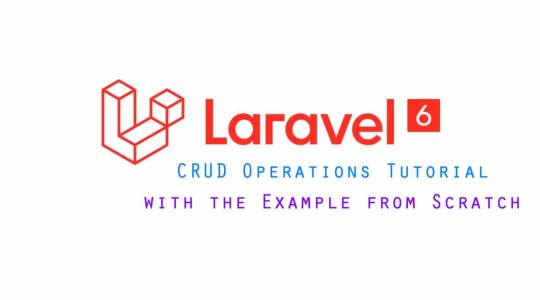
Laravel 6 CRUD Operations Tutorial with the Example from Scratch ☞ http://bit.ly/335uINn #php #laravel6
1 note
·
View note
Text
Laravel 9 PHP Guzzle Http Client Examples
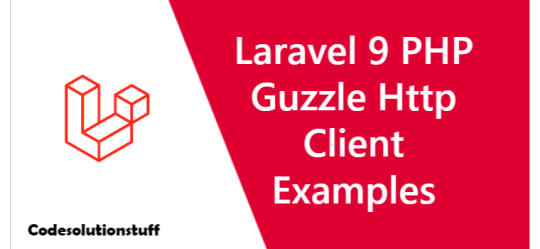
What role may Guzzle HTTP Client play in your PHP Laravel GET and POST requests? We will attempt to respond to that in this tutorial. If you've been searching the internet for a Laravel Guzzle http client example, your search is over. If I think back to the early days of web development, we relied on cURL to perform tasks like this. However, a lot of advancements were made over time. Guzzle is one of such developments, and now I'd like to talk about the Guzzle HTTP client. We'll look at how to build the Guzzle HTTP Client in Laravel and learn how to submit HTTP requests in this tutorial.
Install Guzzle Http Package
Guzzle is a PHP HTTP client that makes it simple to interface with online services and submit HTTP queries. It offers a user-friendly interface that is both straightforward and effective for making POST requests, streaming huge uploads and downloads, using HTTP cookies, uploading JSON data, etc. Ideally, we need to install the guzzlehttp/guzzle package using Composer package manager in order to send HTTP queries. composer require guzzlehttp/guzzle Guzzle 6's best feature, and what draws my attention to it, is the ability to simultaneously submit synchronous and asynchronous queries from the same interface. Additionally, this provides countless settings for use with http requests.
Guzzle HTTP Client CRUD Requests
You may get a general concept about making GET, POST, PUT, and DELETE requests with Guzzle 6 HTTP Client library in Laravel from the information provided below. Guzzle GET Request public function guzzleGet() { $client = new GuzzleHttpClient(); $request = $client->get('http://testmyapi.com'); $response = $request->getBody(); dd($response); } Guzzle POST Request public function guzzlePost() { $client = new GuzzleHttpClient(); $url = "http://testmyapi.com/api/blog"; $myBody = "Demo"; $request = $client->post($url, ); $response = $request->send(); dd($response); } Guzzle PUT Request public function guzzlePut() { $client = new GuzzleHttpClient(); $url = "http://testmyapi.com/api/blog/1"; $myBody = "Demo"; $request = $client->put($url, ); $response = $request->send(); dd($response); } Guzzle DELETE Request public function guzzleDelete() { $client = new GuzzleHttpClient(); $url = "http://testmyapi.com/api/blog/1"; $request = $client->delete($url); $response = $request->send(); dd($response); } Read the full article
0 notes
Text
When you start learning any programming, you start building basic application functionalities. CRUD is the basic things you build in any application. In this tutorial, I have created simple CRUD application for beginners from the scratch. So if you are new to Laravel, this tutorial will help you to understand the basic MVC structure of Laravel. We are going to build blog application which includes creating, editing showing and deleting post. We will go through step by step from the starting. You can also build the Laravel CRUD application using this tutorial. The tutorial will follows below steps: Step 1: Create new Laravel application Step 2: Configure database environment Step 3: Create and run database migration Step 4: Create Post model Step 5: Create application routes Step 6: Create PostController controller Step 7: Create blade view for payment button Step 8: Test CRUD application Prerequisite: We assume that you have already installed LAMP server into your Ubuntu system. We also assument that you have installed Composer which is used to create Laravel application and managing PHP packages. So, let's start from creating fresh Laravel application. Step 1: Create new Laravel application We are going to start tutorial from creating new Laravel 8 application. We will use Composer application command to create latest Laravel application. To start with tutorial, open the Terminal or CMD and run the below Composer command to create Laravel application. composer create-project laravel/laravel blog --prefer-dist After the project is created, change Terminal directory to project root. cd blog Step 2: Configure database environment In the second step, we will setup database and configure into our Laravel application. Laravel database configuration are stored at .env file of root directory. Open the .env file and change the database with your MySQL database and credentials. DB_CONNECTION=mysql DB_HOST=127.0.0.1 DB_PORT=3306 DB_DATABASE=blog DB_USERNAME=root DB_PASSWORD=root Step 3: Create and run database migration After we have setup database, we need to create tables into database. For that first create migration class for database table. Run the following command into Terminal to create migration file. php artisan make:migration create_posts_table This will create migration file at database/migrations directory. Open that file and add new fields into up() method.
0 notes
Text
Laravel crud
Laravel Archives - Readerstacks Blogs to Improve Your Coding Skills
In this section we cover a cool tutorial on Laravel crud ajax. Handling database interactions with Ajax has several advantages. We know this contributes to very fast page refreshes, reduces bandwidth usage, and provides a smooth user experience. We used Laravel on the backend and jQuery on the client side to set up a fully functional Laravel Ajax Crud training application.
So, let's start and follow below steps.
Step 1: Install Laravel
In the terminal, enter the following command.
Step 2: Database setup
In the second step we configure the database, eg database name, username, password etc for our raw Laravel AJAX example. So open the .env file and fill in all the details as shown below:
Step 3: Create a migration table
We will create an AJAX raw post example. So first we need to create a migration for the "posts" table using Laravel PHP Artisan command, so first type the following command:
Step 4: Add resource route
Now add the resource route in Routes/web.php
Step 5: Add controller and model
Create a PostAjaxController with the following command.
Step 6: Add Blade files
In this step we will only create one blade file for this example, so create postAjax.blade.php in this path resources/views/postAjax.blade.php
Laravel Example Laravel ajax upload Tutorial Here you will learn how to upload files using jQuery Ajax in a Laravel application
As well as uploading files to a MySQL database and a folder on the web server with validation. And also upload data and files in form with ajax in Laravel application.
When working with Laravel applications. And you want to upload file, invoice file, text file with ajax form to database and server folder in Laravel.
This tutorial will guide you step by step uploading files using Ajax forms submitted with validation in Laravel.
Note that this Laravel ajax file upload tutorial also works with Laravel versions 5, 5.5, 6, 7.x.
Laravel CRUD operating application; In this tutorial you will learn step by step how to create a Laravel crud in Laravel . And how to validate and update server-side form data in Laravel Crud application.
CRUD Meaning: CRUD is an acronym that comes from the world of computer programming and refers to the four functions deemed necessary to implement persistent storage applications: create, read, update, and delete.
This Laravel Crud Operations step by step tutorial implements a simple raw operations enterprise application in a Laravel application with validation. With this raw application you can learn how to insert, read, update, and delete data from a database in Laravel .
Visit for more Information:- https://readerstacks.com/how-to-create-rest-apis-in-laravel
0 notes
Text
How to telescope installation and configuration in laravel?
Hello to all! Now in this article, i will talk about laravel telescope installation. i will use how to install telescope laravel? So in this article i will goes to detailed descriptive on telescope installation and configuration step by step. I will look at example of telescope installation and configuration. So Let’s start with laravel telescope tutorial.
So now in this tutorial, i will show you how to telescope installation and configuration in laravel 5.8 ,laravel 6, laravel 7 and laravel 8 version.
Laravel Telescope is a debug assistant for laravel project. Whenever you will write code it is very hard to debug and find the error in your application manually. Telescope will provides access to the requests coming into your application, exceptions, log entries, database queries, model watch, catch, redis, queued jobs, mail, scheduled tasks and more in one place.
So, now here i will give you a very simple step of how to install telescope in your laravel app and also how it looks after install.
Read Also : PHP AngularJS CRUD with Search and Pagination Example From Scratch
Install Laravel Telescope Package
Install telescope for with following command:
composer require laravel/telescope
you can also install for specific environment:
composer require laravel/telescope --dev
Read Also : How to Autocomplete Textbox in Laravel 8 with Ajax?
Install Telescope
after install this package, we have to also install telescope by using following command that will create migration files and configuration file.
php artisan telescope:install
now let’s run following command to create tables for telescope.
php artisan migrate
now you are ready to run telescope. so let’s run project:
php artisan serve
open bellow url
localhost:8000/telescope/requests
Read Also : How to Get Selected Option Text in Vue JS ?
What features provide by telescope?
Requests
Commands
Schedule
Jobs
Batches
Cache
Dumps
Events
Exceptions
Gates
Logs
Mail
Models
Notifications
Queries
Redis
Views
Thanks For reading. Hope it will help you . Also you can follow us on Facebook
0 notes
Photo
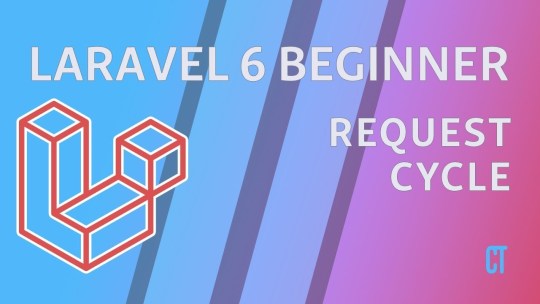
Laravel 6 Beginner – e13 – Request Cycle The request cycle is an important concept to any modern web application. In this episode, we are diving into what it means to use a helper function, the service ... source
#Laravel#laravel 6#laravel 6 crud#laravel 6 for beginners#laravel 6 new features#laravel 6 tutorial#laravel project#laravel request#laravel request lifecycle#laravel response#laravel service container#laravel services#PHP Laravel#request laravel#request life cycle in laravel
0 notes